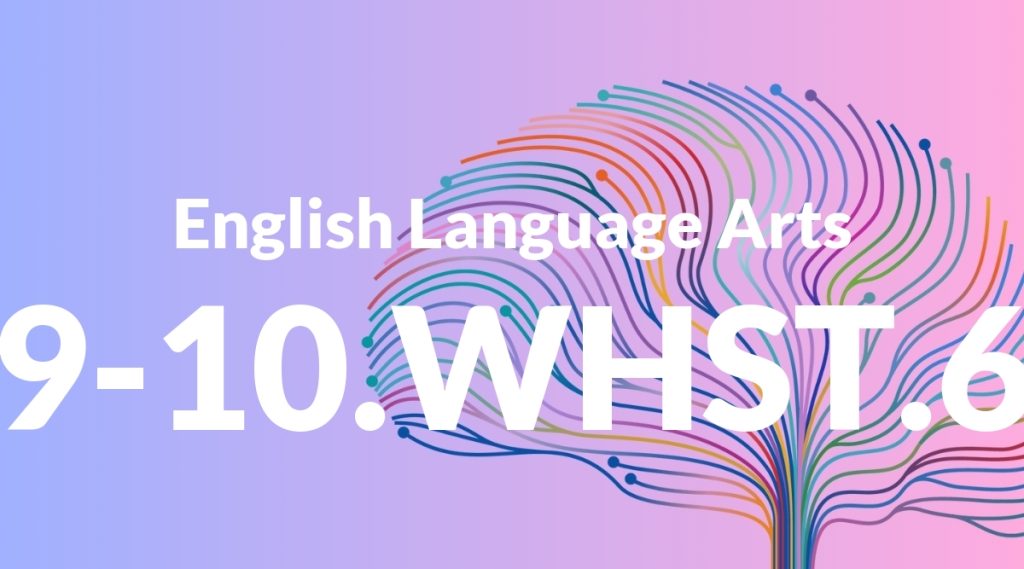Standard: 9-10.WHST.6 – Use technology, including the Internet, to produce, publish, and update individual or shared writing products, taking advantage of technology’s capacity to link to other information and to display information flexibly and dynamically.
Grade level: Grade 9-10
Subject: English Language Arts
Domain: Writing: History, Science & Technical Subjects
Teacher Overview
This standard emphasizes the importance of using technology to produce, publish, and update writing. It is crucial for students to understand how digital tools can enhance their writing and allow them to link to and display information dynamically. Mastery of this standard prepares students for the modern digital landscape, where writing is often collaborative and continuously evolving. Students should already be familiar with basic digital tools and have some experience using the internet for research. They should also understand the fundamentals of writing and editing.
After mastering this standard, students will be able to leverage digital tools to create professional and dynamic writing products. They will also be better prepared for future academic and professional tasks that require digital literacy.
Common Misconception 1
A common misconception is that using technology in writing is limited to typing on a computer. This is incorrect because technology offers a wide range of tools and platforms that can enhance writing in various ways, such as collaborative editing, multimedia integration, and dynamic content updates.
Intervention 1
To address this misconception, provide students with hands-on activities using different digital tools and platforms. Show them how these tools can be used to enhance their writing and make it more interactive.
Common Misconception 2
Another misconception is that once a piece of writing is published online, it cannot be changed. This is incorrect because digital writing is inherently iterative, allowing for continuous updates and improvements.
Intervention 2
Demonstrate the iterative nature of digital writing by having students publish a draft online and then update it based on feedback. This will help them understand that digital content can be easily revised.
Prerequisite Knowledge
Students should have a basic understanding of how to use common digital tools like word processors and the internet for research purposes.
Subsequent Knowledge
Students will develop advanced skills in digital literacy, including the ability to critically evaluate online sources and effectively use multimedia elements in their writing.
Instructional Activities
- Create a blog post on a historical event with hyperlinks to primary sources.
- Collaborate on a science research paper using a shared Google Doc.
- Develop a technical guide with embedded videos and interactive elements.
- Publish an e-book and update it based on peer feedback.




